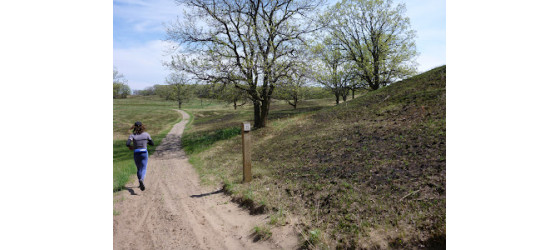
Guest blog: Doing more with less (part 2) by Andy Magness @ENDracing
Posted In: Fitness | Goals | Running October 18th, 2012 divider No Comments »Note – I’m writing this for ambitious recreational athletes – guys and girls like me who love racing and pushing themselves. I’m not advocating that anyone changes what they are doing or adopts my ideas. i’m simply articulating my beliefs – based on personal experience and research – that there is an alternative strategy to approaching this sort of fitness that may be of interest to some people.
There is a tremendous power in consistency – both in training and in life. Cumulative and continuous gains reward those who are able to stick with things. In terms of training for a longer race such as an iron distance triathlon, however, the importance of consistency is typically emphasized in the short term, ending with the event itself. This is understandable – we are inculturated to be goal oriented people.
This traditional approach of rearranging ones schedule for a limited period of time to really pound out the hours in preparation for a major effort can indeed work. The down side is that most of the time the demands during this period are usually so great that they can’t (and shouldn’t) be maintained indefinitely. This usually leads to an ‘off season’, variable fitness over time, and supports the idea (which perpetuating the endless cycle) that we need to ‘train’ for things. I call this way of approaching events and fitness the ‘peaks and valleys’ approach, or PV for short.
My approach to fitness and endurance events favors a more long term, patient, and sustainable approach. It requires figuring out the amount of time that you can commit on a continuous basis exclusively to fitness – without overtraining, sacrificing time with family, causing marital disharmony, or losing motivation. After lots of trial and error, for me this is somewhere around 1 hour a week.
This is the amount of time that I dedicate to focused training – week in and week out – no matter what. I’ve kept it up for years (rather than weeks or months) and used my time with maximum efficiently (the subject of the next post). The long term consistency that this approach allows without the need for built in recovery periods (that off season I mentioned) enables slow but steady cumulative gains that add up to what I call ‘maintainable base fitness’, or MBF. In the MBF approach, one aims to achieve the highest level of fitness that can be maintained indefinitely given the sum of physical, mental, and environmental factors unique to them.
The nature of MBF usually requires sufficiently low weekly training hours that races themselves replace longer training sessions as the crucible where one learns how the body and mind respond to prolonged efforts. Over the long run, however, and in my experience, this history of actual events serves just as well as (or better than) the ‘long runs’ traditionally included in training schedules to mimic them.
Next up: Part 3, Increasing MBF by maximizing training’s Return on Investment!
Andy Magness is a 37 year old amateur athlete and adventurer based in Grand Forks, North Dakota . He strives to find the balance between work, family, and an outrageous desire to be fit enough to ‘do anything’. His blog threehoursaweek.blogspot.com chronicles his attempt to ‘do more with less’.
